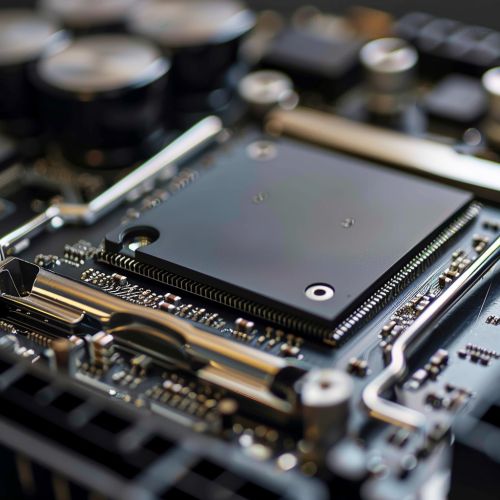Graphics Processing Unit
Overview
A Graphics Processing Unit (GPU) is a specialized electronic circuit designed to rapidly manipulate and alter memory to accelerate the creation of images in a frame buffer intended for output to a display device. GPUs are used in embedded systems, mobile phones, personal computers, workstations, and game consoles. Modern GPUs are very efficient at manipulating computer graphics and image processing, and their highly parallel structure makes them more efficient than general-purpose CPUs for algorithms where the processing of large blocks of data is done in parallel.
History
The term GPU was popularized by Nvidia in 1999, who marketed the GeForce 256 as "the world's first GPU". It was presented as a "single-chip processor with integrated transform, lighting, triangle setup/clipping, and rendering engines". However, the roots of the modern GPU go back to the development of graphics hardware for earlier computing platforms.
Architecture
The architecture of a GPU is a critical aspect of its function and performance. GPU architecture refers to the technology a GPU is built with. It includes the type of circuitry, the manufacturing process, and the capabilities of the GPU. There are two main types of GPU architecture: rasterization and ray tracing.
Functionality
GPUs are designed to perform parallel operations on multiple sets of data, unlike Central Processing Units (CPUs), which are designed for sequential processing. This makes GPUs particularly effective for algorithms where the same program is executed on multiple data points, but each instance of the program is independent of the others.
Applications
GPUs are used in a variety of applications, from rendering video and graphics in games to performing complex calculations in the fields of scientific computing, cryptography, and machine learning. In recent years, GPUs have also been used in blockchain technology, specifically in the mining of cryptocurrencies.
Future Developments
The future of GPU technology is tied to advancements in the broader field of computing. As the demand for higher resolution video, more realistic gaming, and more complex scientific computation grows, so too does the demand for more powerful and efficient GPUs.
See Also
- Central Processing Unit
- Computer Graphics
- Computer Hardware
- Video Game Console
- Cryptocurrency Mining


